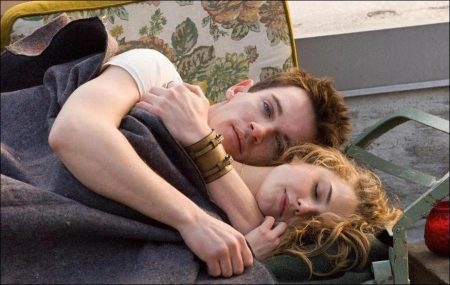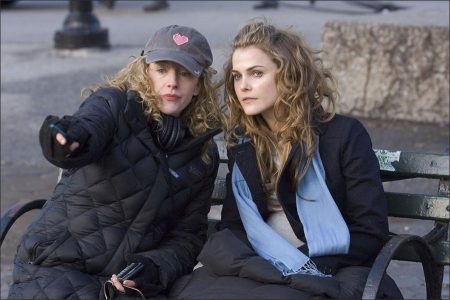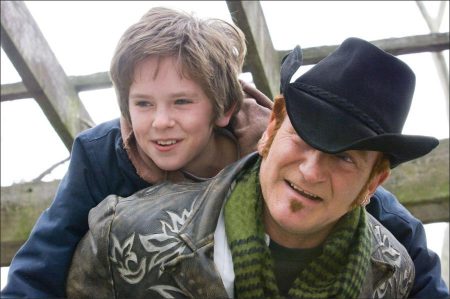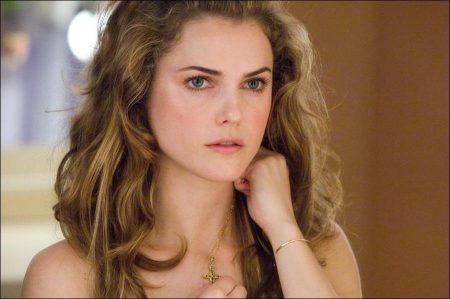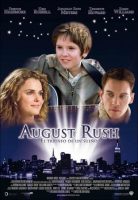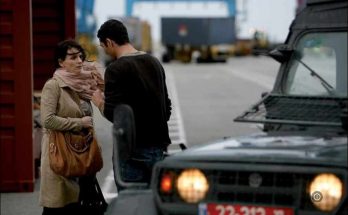August Rush Movie Trailer. “I believe in music the way some people believe in fairy tales. What I hear came from my mother and father. Maybe that’s how they found each other. Maybe that’s how they’ll find me…” – August Rush
“This is a story about a child who hears the world differently,” offers award-winning producer Richard Barton Lewis, who nurtured “August Rush” from its inception through every aspect of development and production. “He doesn’t fit in where life initially places him. His one desire is to be with his parents, and no matter how much people try to convince him that they aren’t alive or, worse, that they don’t care, he never gives up believing. No one can talk him out of it. He waits for them for 11 years and then decides it’s time to go look for them himself.” What he doesn’t know is that his parents are just as lost as he is.
Director Kirsten Sheridan explains. “August’s ability to channel music from nature has its origin with his mother, Lyla, a concert cellist, and his father, Louis, a singer, songwriter and guitarist—both of them talented musicians but, more importantly, both similarly attuned to the music that’s all around us but few of us hear. It’s what brought them together.
These are two people who have always heard the world in a special, specific way and that has left them a bit on the periphery with other people. When they realize that they each feel the same way, it’s an absolutely magical and immediate connection that breaks them out of their loneliness for that one night and that’s when August is created.
“But, like so many love stories, things don’t run smoothly. Lyla and Louis are quickly torn apart and remain apart for years. Sadly, upon losing each other, they also lose their passion for music,” adds Lewis.
That the lovers’ separation also results in their unintentional separation from their child— a child they don’t know even exists—gives the story a triangular structure as each must now follow his or her unique journey to the same destination if they are ever to be a family.
“I liked the story’s ensemble nature,” notes Jonathan Rhys Meyers, who stars as the impulsive, creative Louis. “They’re all parts of the same puzzle, these three people separated by circumstance, who need each other to feel fully alive.”
Keri Russell, who stars as Louis’ precious Lyla, says, “I love stories in which people are trying to find where they belong, to find their true home and the people they’re meant to be with. It’s easy to make a poor choice and spend a decade living the wrong kind of life and not as easy to correct that kind of error, but it’s possible. I believe what this story is saying—not just with August but with each of the characters—is that it’s only when you open yourself up to emotion and loss and become vulnerable that you find your way.”
Sheridan concurs. “I’m constantly reminded of how the most profound ideas are often the most basic. What I fell in love with was the central story of this family finding each other through their shared passion for music and how it juxtaposes life’s two extremes: love and loss.”
Freddie Highmore, whose 14th birthday coincided with the first week of filming, describes how this musical influence is a theme established at the very beginning and helps to enhance and propel the story. “Even in the orphanage, August feels connected to the parents he’s never met because he believes they hear the same music he hears in everything around him. Later, when he learns guitar, he can start expressing some of that music and believes he is playing to his parents. One thing leads to another with him just getting better at playing all the time and gaining a wider audience, but it all means the same to him: he’s calling out to these two people. He is absolutely convinced that this is the way to reach them.”
Music as communication is a concept August knows instinctively but it’s the mysterious man known as Wizard who first articulates it for him. Played by Robin Williams, who refers to the character as “a kind of rock-and-roll Fagan,” Wizard serves as August’s first mentor. “You know what music is?” he asks the boy. “A harmonic connection between all living beings.”
With much of the story told through the changing rhythms and moods of music, Lewis greatly credits director Sheridan’s ability to “match sound with camera flow, to sweep, visually, as the music sweeps, always flying to capture August’s soaring point of view. Kirsten brought a facile touch as well as passion, imagination and tremendous heart. It was the purest collaboration I have ever had with a director. She is an amazing storyteller.”
“August Rush” evokes a certain fairytale quality but is grounded in reality—a balance the filmmakers sought to maintain because, as Sheridan attests, “If everything is magical you won’t be able to see the one part of it that is truly meant to be transcendent; it would be like putting a color on top of another color. We wanted the contrast of the real world.”
Citing the truth-is-greater-than-fiction principle, screenwriter James V. Hart notes that even the seemingly fantastic elements of August’s musical prowess could be drawn from reality. “One amazing aspect of this story is that while we were prepping the script for production a child prodigy enrolled at Juilliard—Jay Greenberg, age 12, who had already composed five symphonies. In an interview he stated that he doesn’t know where the music comes from, but that when it arrives in his head it’s completely composed. He sounded like our August.”
The Tempo Of New York City
“New York City is a living entity,” Robin Williams attests. “It’s possible to shoot movies in other places and finesse it to look like New York. Toronto can look like New York, but if you’re actually shooting a scene in Columbus Circle, Central Park, Washington Square, if you’re in Brooklyn or the Village or Manhattan, as soon as you step onto the street you know it’s a whole other game. That’s vital to a film like this; it’s all about rhythm and pulse.
“Washington Square has a great tradition of busking and performance, whether it’s musicians or chess hustlers,” he continues. “We’d be on the set all day with the kids playing their instruments and then break for dinner, and when we came back there would be genuine street kids out there with their own instruments.”
Adds Lewis, “Washington Square and Central Park, while also beautiful, can be easily dark and oppressive also, depending on your mood and circumstances.” “Robin, of course, would entertain the entire park full of people between takes. He had a thriving stand-up routine on the side,” recalls Sheridan.
Mindful of mood, production designer Michael Shaw and the filmmakers selected the film’s numerous practical locations to illustrate the stark contrasts that define August’s experience in the city. Offers Shaw, “It’s not an easy place, but it makes you tough to live there. As August feels that, we want the audience to feel it also. At the same time he’s taking in the glamorous New York iconography, the clean lines and elegance of places like Carnegie Hall and Juilliard, he’s also seeing the city’s rougher side, like the abandoned theater that is essentially Wizard’s lair.”
The production crew discovered an old but working theater for sale in the Bronx and transformed it into a derelict version of the Fillmore East, complete with faded marquee and posters and oversized speakers in the back. “We removed the seats, aged it down and decayed it,” says Shaw, whose work draws upon years of experience as a sculptor and painter.
After welding a series of ramps and substructures that resembled makeshift scaffolding and decorating the walls with graffiti, he and his team “brought in props to look like the kids had created a home for themselves from whatever items they could salvage from dumpsters and the street—bits of wood, old doors, police barricades, whatever they could find. The trick was in making it look flimsy and slipshod, as though constructed by kids, yet have it be strong and safe enough for the cast and crew to walk on and move around.”
“It’s kind of a fairytale tree house structure that kids would fantasize about building, because they’re so resourceful and imaginative, but with an eye toward efficiency, which is how Wizard runs the place,” notes Sheridan.
Filming outdoors in New York required not only careful planning but a measure of luck, which remained consistently in their favor, as Sheridan relates with a touch of lingering amazement. “At one point we needed snow for a scene upstate when August is at the orphanage. It was February but there was no snow until the day before we traveled. Then, suddenly, they had the most massive snowfall that area had seen for something like 20 years and we had our beautiful red barn covered with white.”
The biggest challenge was the film’s climactic scene set at a symphony concert in Central Park, involving more than 500 extras and scheduled for an April shoot. Says Sheridan, “It was a huge risk but Richard is a fantastic risk-taker. He knew he just had to go for it, and it turned out that we got the four warmest nights in the history of April in New York City.”
“Everyone said you can’t do it, forget about it, move it inside,” the producer admits. “But that wouldn’t work. It had to be Central Park. This child has been searching for a way to reach as many people as possible, to go beyond the borders of any building and fill the air with music in the hope that his parents will finally hear him. We could not take this indoors.”
Says Sheridan, “The final rhapsody incorporates all the themes and the music August has heard or created, plus everything he has experienced in his emotional journey. It recalls the sounds that have impressed and influenced him, from the wind in the wheat fields to the church organ and Wizard’s harmonica.”
“It also integrates Lyla’s complex cello compositions and Louis’ guitar riffs, referring to August’s musical heritage,” says Lewis. “Assimilating all these themes with all the music of August’s imagination and experience is what the story is about.”
August Rush (2007)
Directed by: Kirsten Sheridan
Starring: Freddie Highmore, Keri Russell, Jonathan Rhys-Meyers, Terrence Howard, Robin Williams, Marian Seldes, William Sadler, Mykelti Williamson, Aaron Staton, Jamia Simone Nash
Screenplay by: Kirsten Sheridan, Richard Barton Lewis, Nick Castle, Jim Hart
Production Design by: Michael Shaw
Cinematography by: John Mathieson
Film Editing by: William Steinkamp
Costume Design by: Frank L. Fleming
Set Decoration by: Carol Silverman
Art Direction by: Mario Ventenilla
Music by: Mark Mancina
MPAA Rating: PG for some thematic elements, mild violence and language.
Distributed by: Warner Bros. Pictures
Release Date: November 21, 2007
Views: 205
